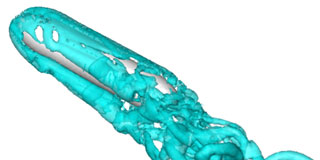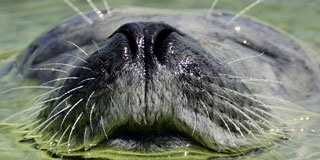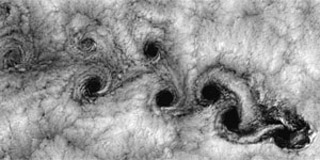Flow Sensing and Control

Biology has equipped underwater animals with a unique sensory suite that allows them to detect and exploit the diverse and powerful underwater phenomena that we are beginning to discover. The lateral line on fish allows them to discern a hydrodynamic image of their surroundings, which they can use to navigate, search out predators or prey, and exploit energy in wakes. By understanding hydrodynamic theory, we too can develop control systems which are able to sense the flow and actively correct a vehicle's movement to exploit its properties.
Biomimetics

Harbor seals can detect the wake of a fish up to 30 seconds after it has passed. Mexican blind cavefish are capable of navigating through treacherous underwater mazes without eyes. Turtles maneuver adeptly, with the ability to turn on a dime, and many fish swim at speeds faster than anyone would have thought possible, with powerful tail thrusts. Our lab studies many of these animals in the context of hydrodynamics and fluid phenomena, in an attempt to understand them and develop technologies inspired from them.
Vortex-Induced Vibrations

Vortex induced vibration (VIV) is a phenomenon observed for bluff bodies in a free stream. The shedding of asymmetric vortices from the bluff body results in oscillating hydrodynamic forces acting on the body and thus leading to its vibration. The vibrations cause severe fatigue damage to structures and thereby reduce the operation life of the structures. The study of VIV of long flexible cylindrical structures and the development of VIV suppression methods is therefore an area of active research interest.
